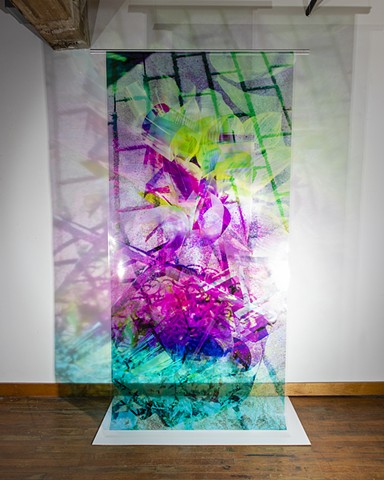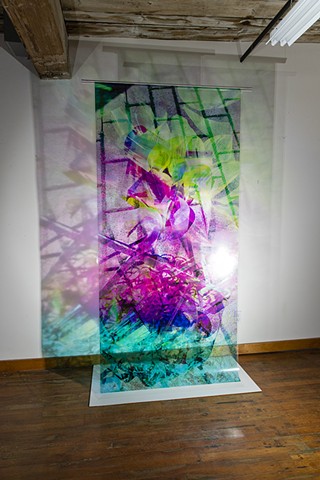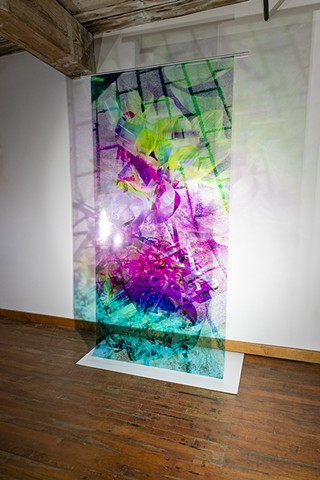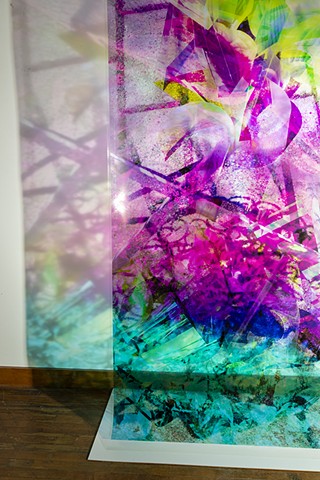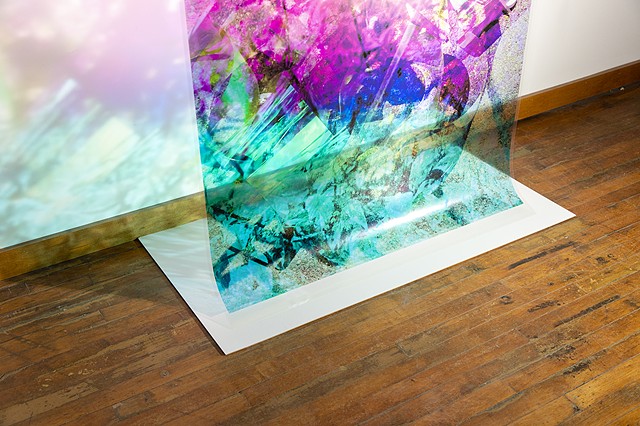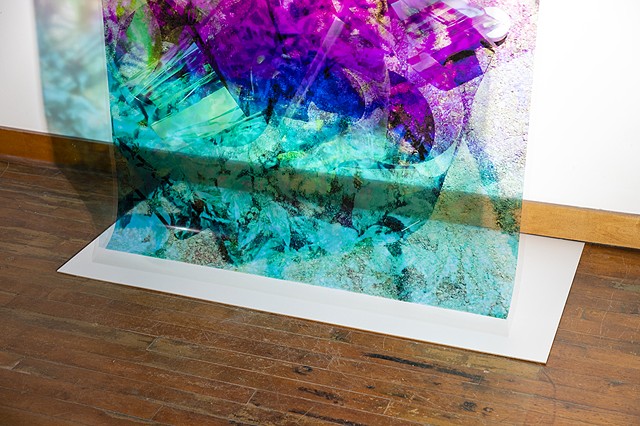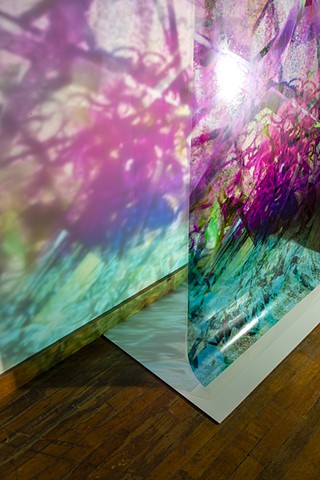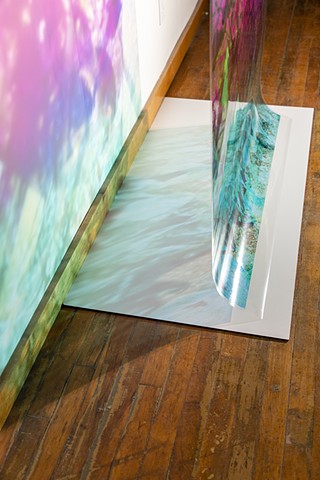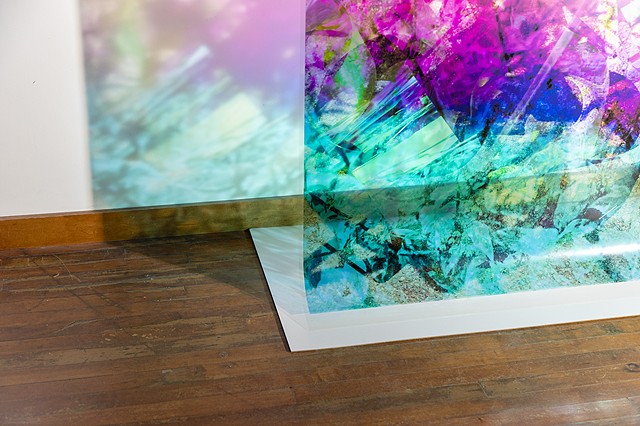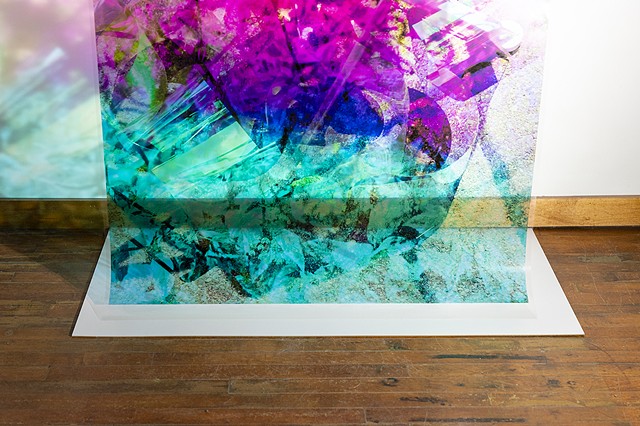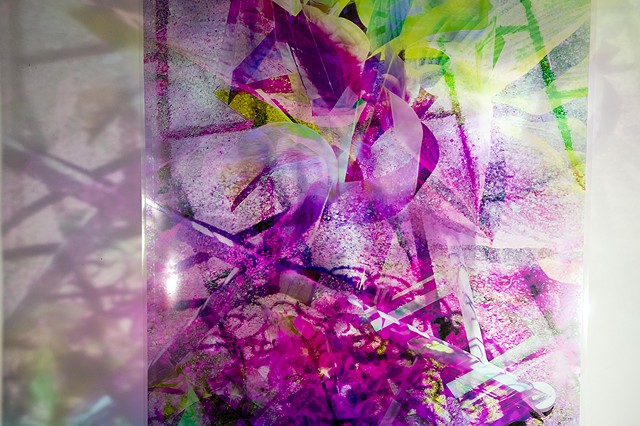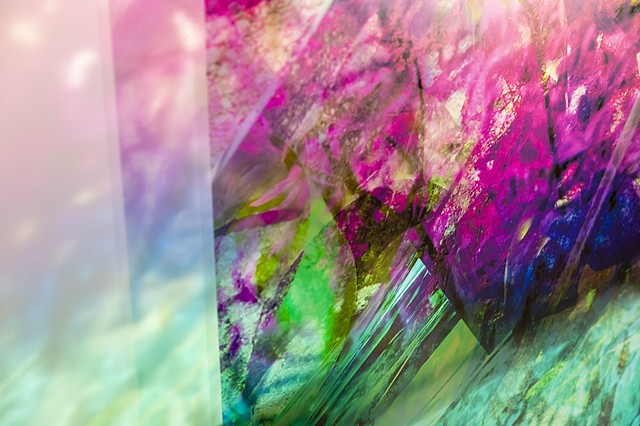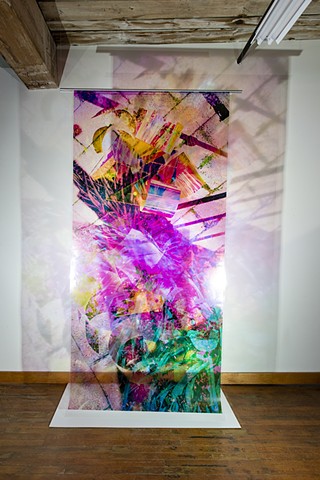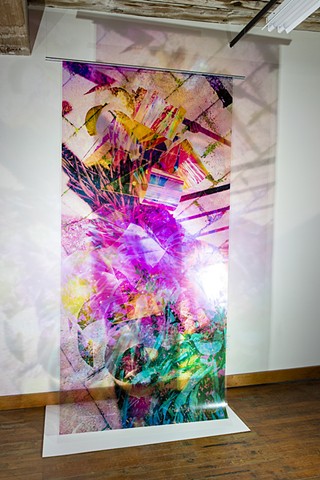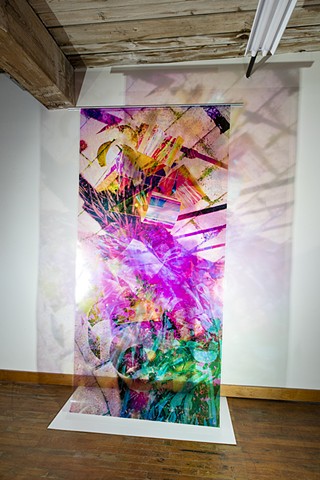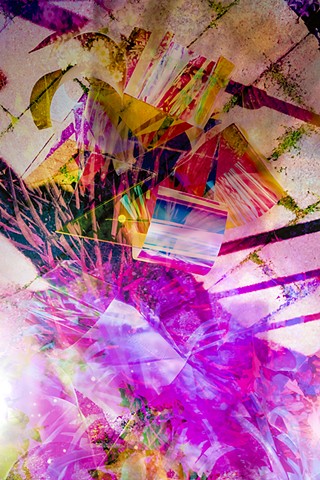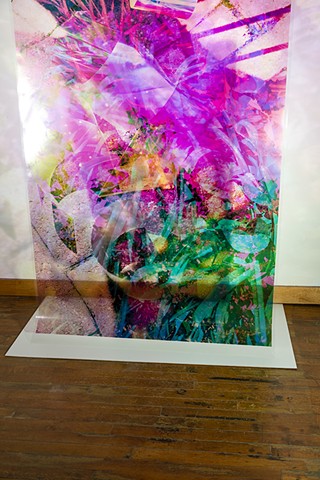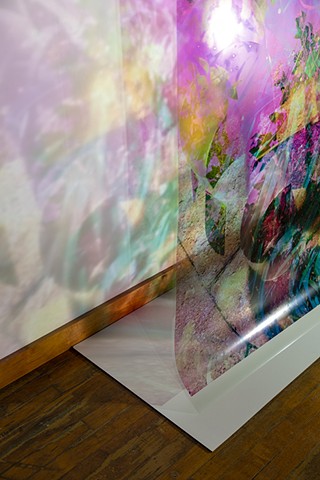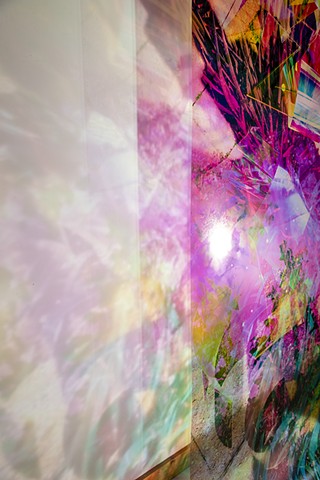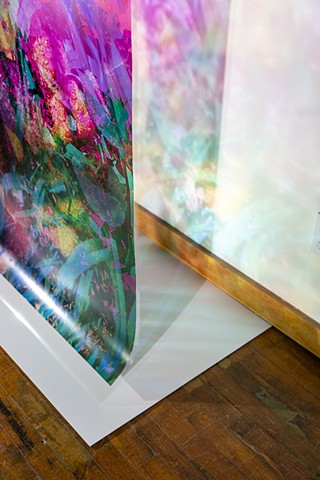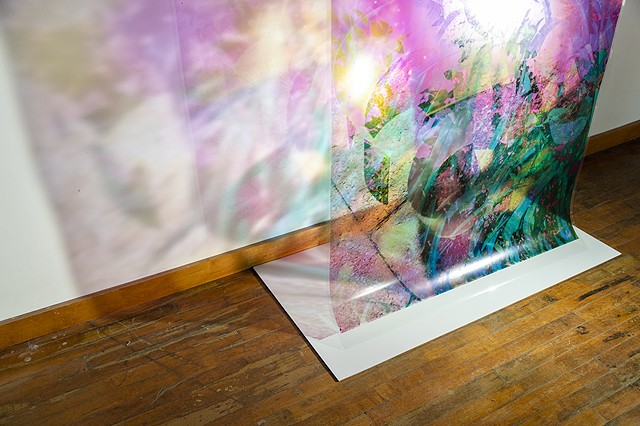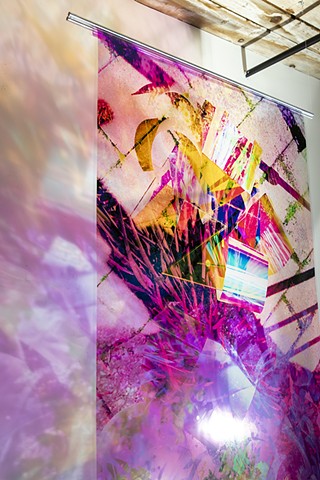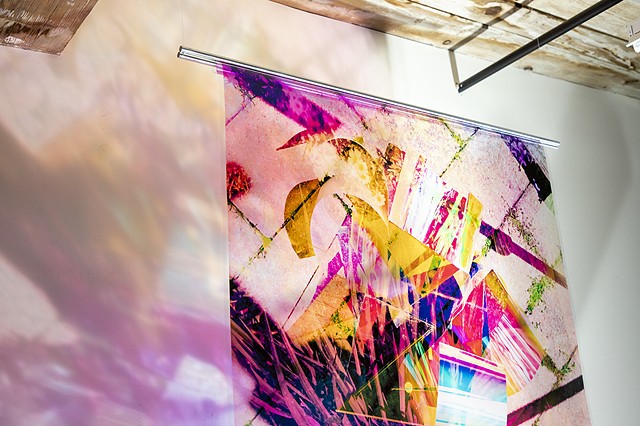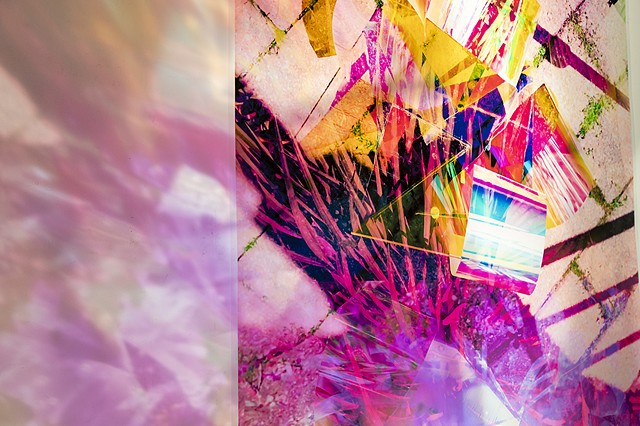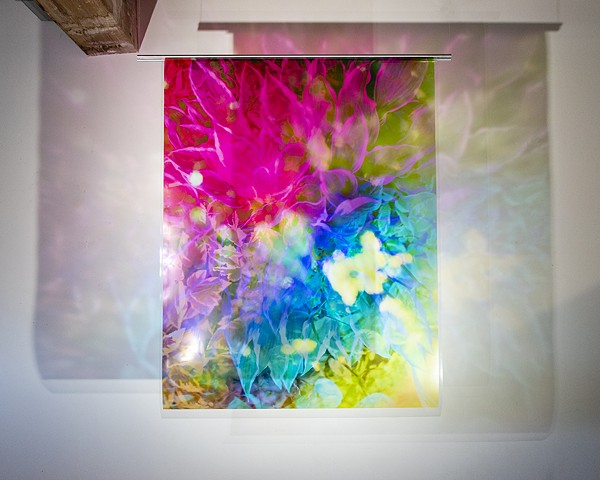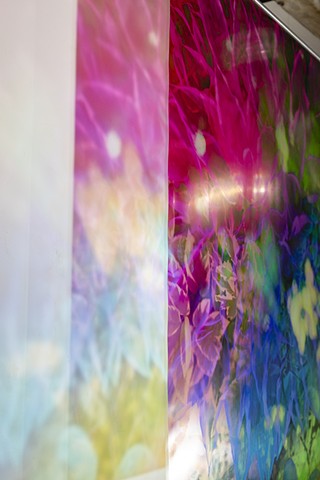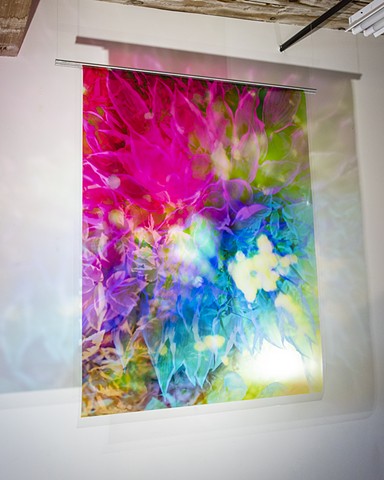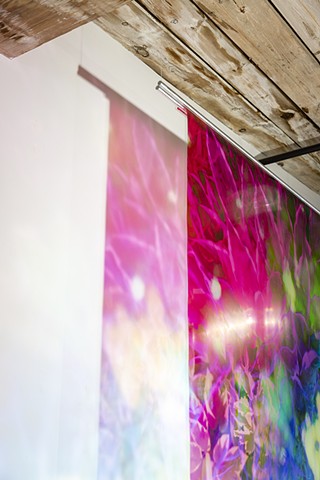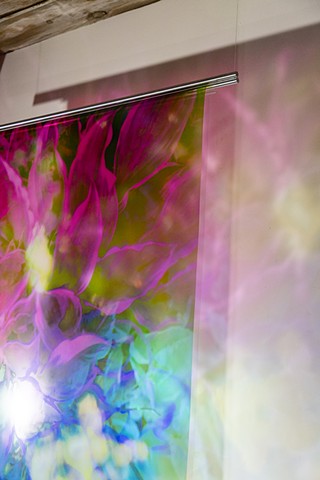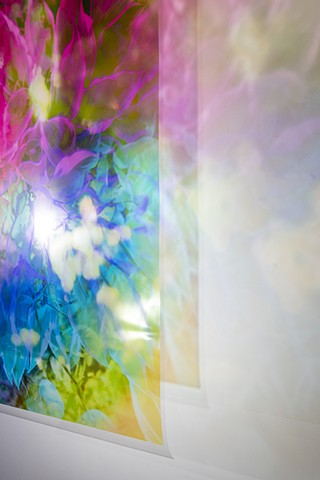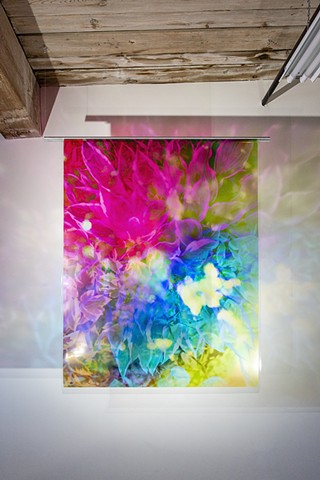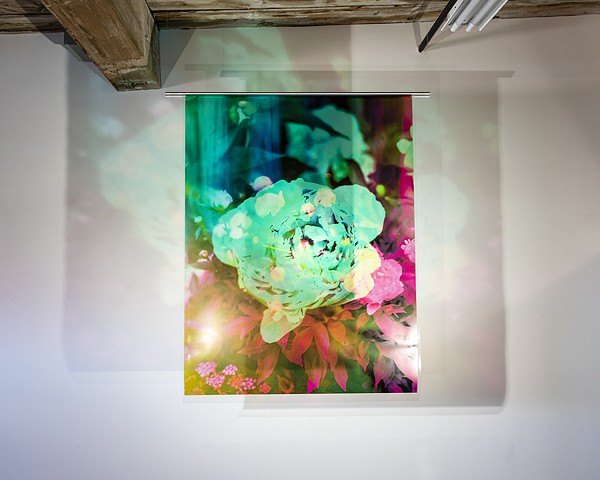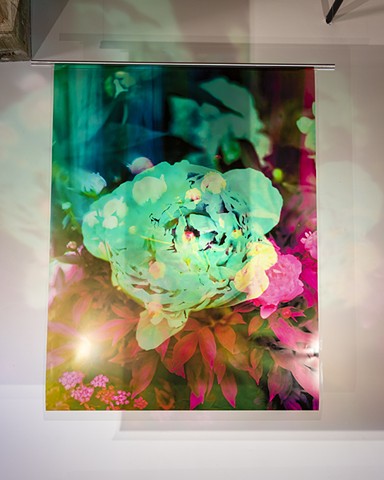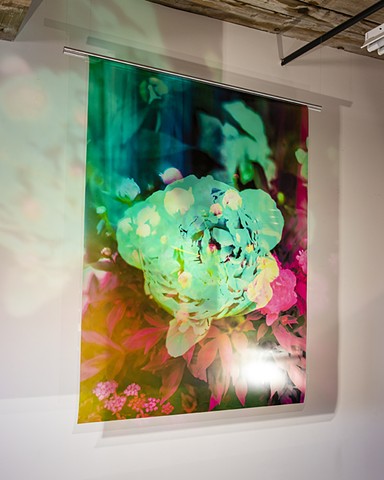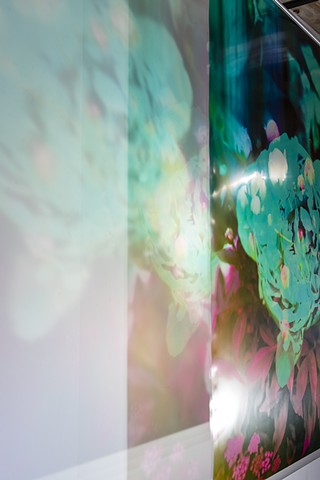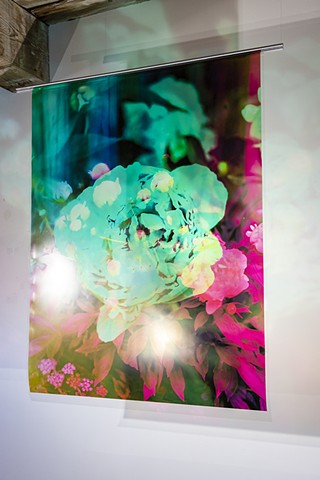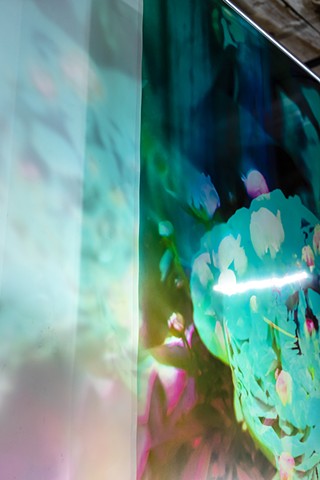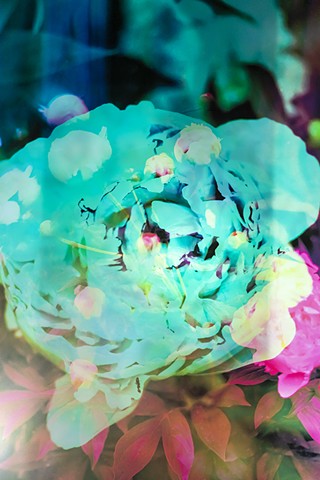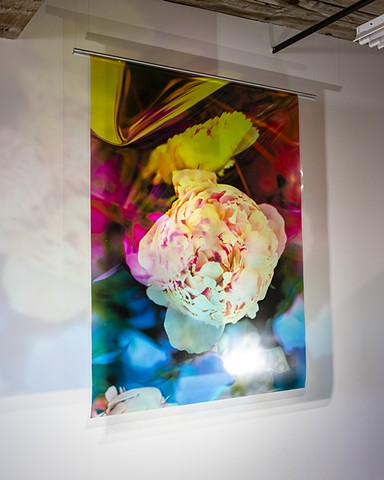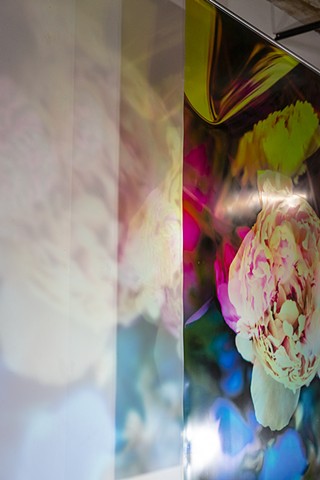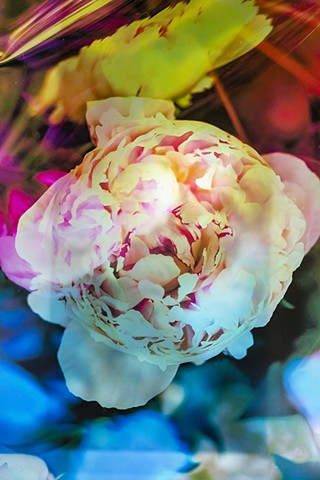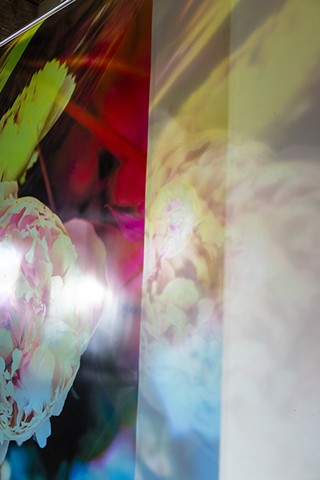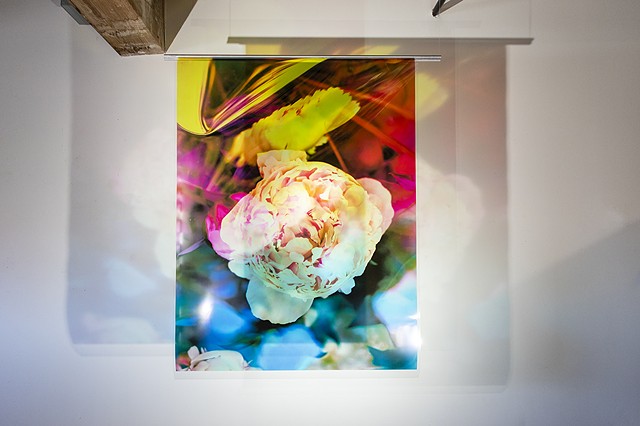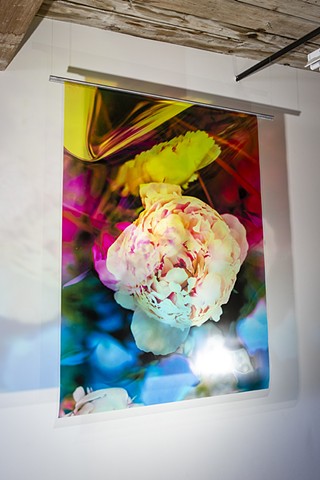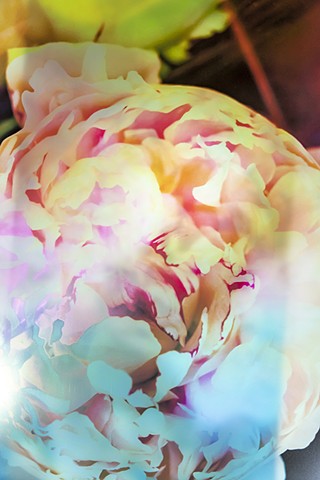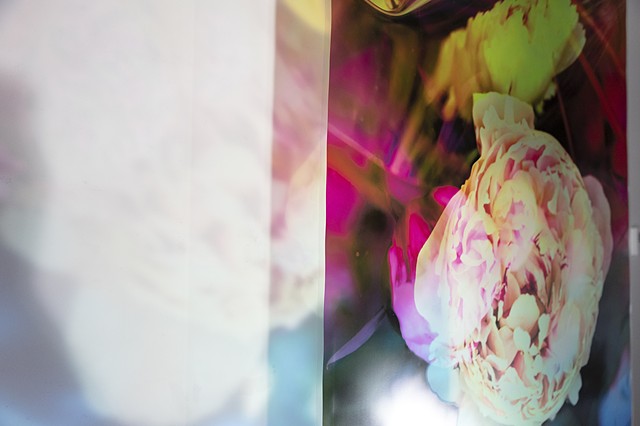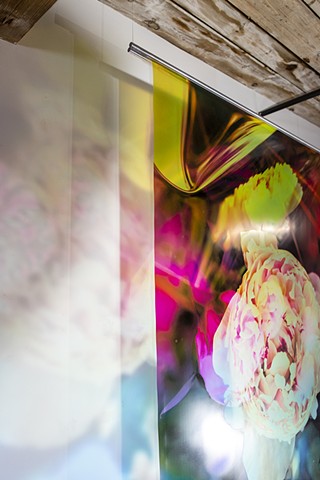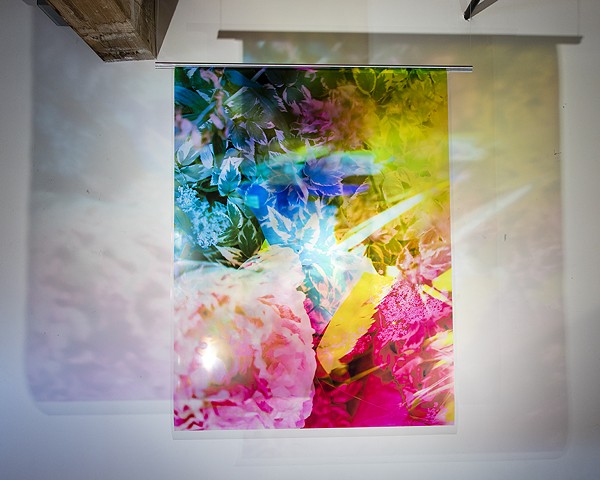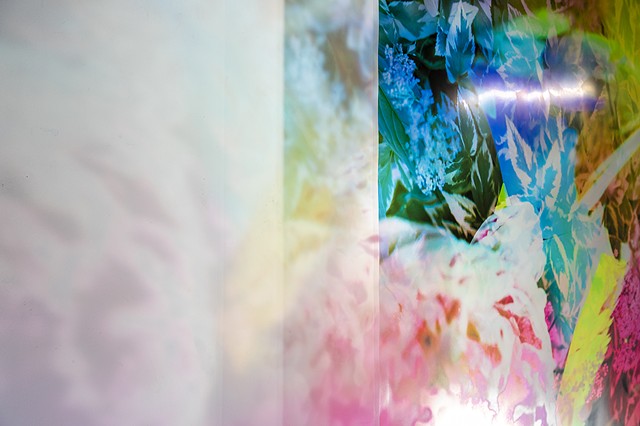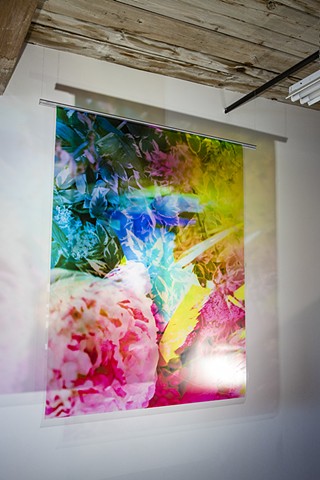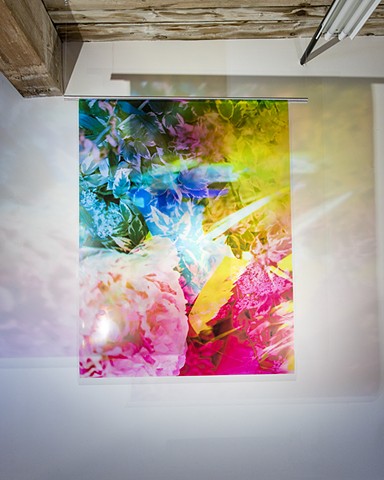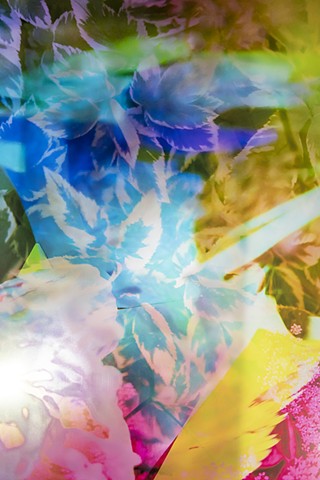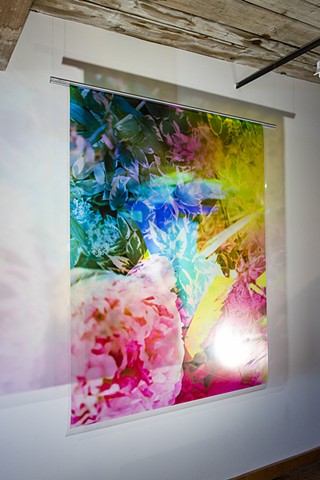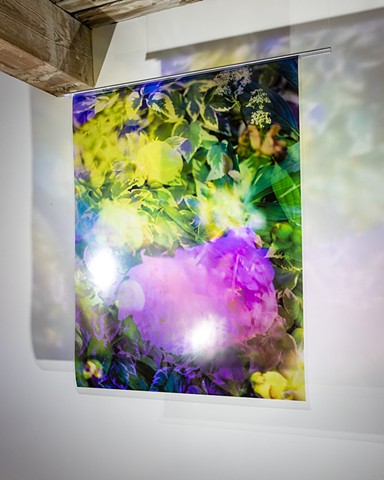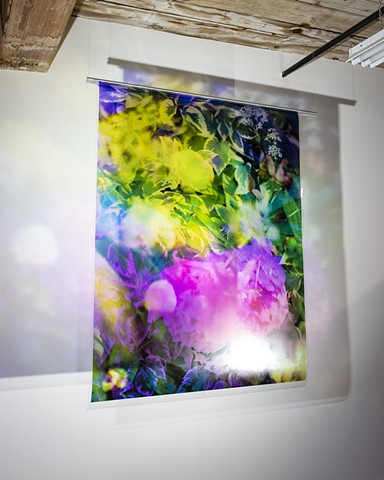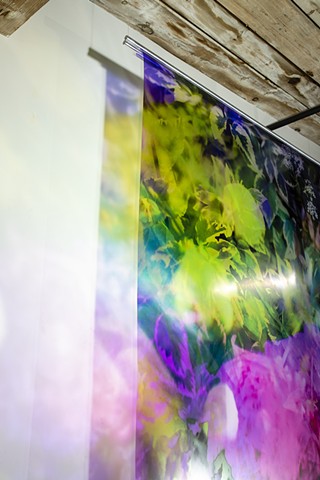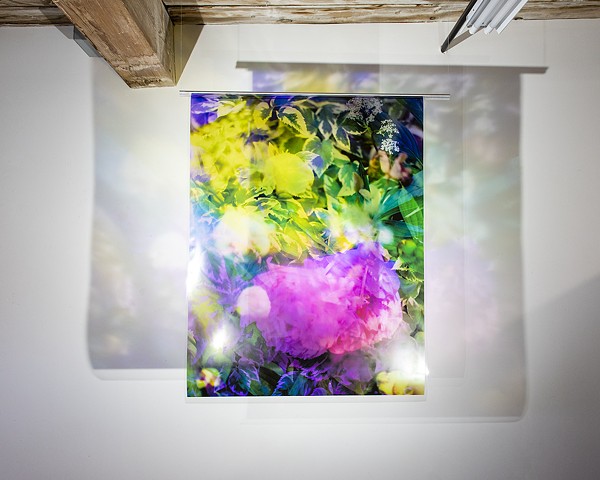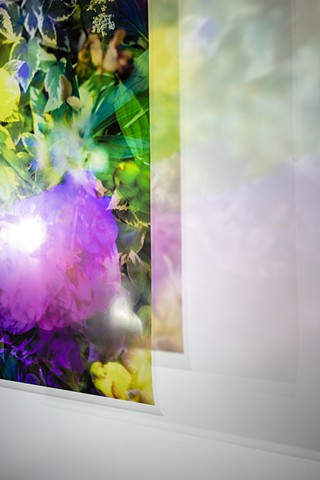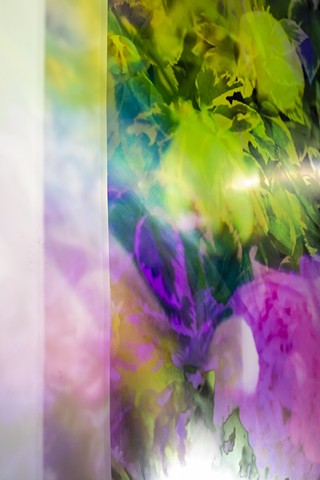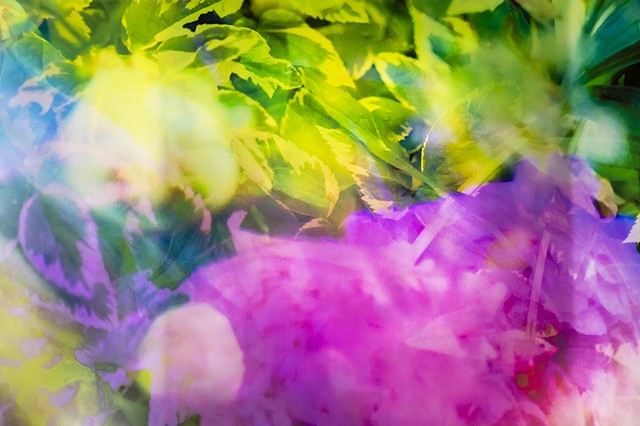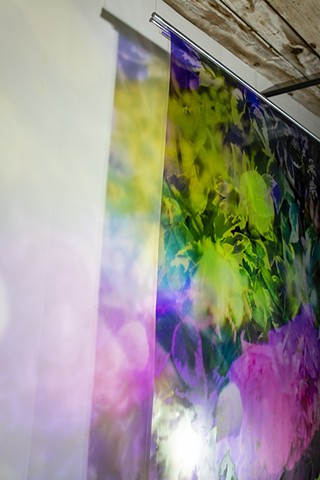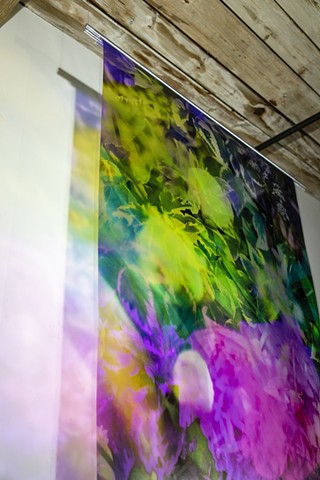Crystal Garden
“Consider the inner garden, that secret glade filled with day dreams, feelings, and memories. Sometimes they can be made physical, a goal of metaphysical gardening. Otherwise they remain mere reflections in a gazing ball.” Diane Ackerman (1)
Crystal Garden
2023-ongoing
Archival pigment prints on transparent film from 120mm negatives, turned aluminum, light.
Unique transparent film installation.
11, 42" x 54" and 3, 42" x 88".
ongoing body of work
Gardens are sensory spaces. Impermanent, unfixed, vulnerable, ever changing living things in constant flux according to cycles of time and seasons. They are carefully cultivated extensions of our consciousness, our memories, and our bodies. We tend to gardens like we tend to people; caring for living things with touch and sunlight, water, and soil to grow. We need gardens as a food source but find solace in the act of tending and caring. My parents garden is an infinite source of sensory information and recollection. There are elements in my parents garden that are transplanted from my grandparents garden, and I hope they will one day be in mine. Crystal Garden merges photography, sculpture, and light to study the construct of the garden in relation to memory, time, space, consciousness, and perception. Moving photography into an expanded field, Crystal Garden investigates the act of gardening in time and space while considering the elemental forces of light and time and their material affects on the body, mind, and in photography.
The garden is a place that is heavily represented subject matter in art history, and also used as a metaphor for our human desire to cultivate relationships with the natural world around us. Looking at the concept of the garden as a social construct, I explore immaterial concepts such as time, light, space, memory, embodiment, the senses, motion, air, and breath through material, image, and form. In Crystal Garden I consider light and time as elemental forces in the act of making of photographs. Light is considered a material used to both make photographs and activate the space in which they exist; making them a material encounter. Light is an essential ingredient in making photographs. It is how we see colour and form, and also how we see and experience physical objects in the world. But it is also a destroyer of materials, our skin, and our eyes. The sun is both volatile and nourishing. In my work I hope to look at both of these aspects of light both materially and pictorially, both through sculpture and image, and use light as a material as much as an ingredient in image making. Just as sunlight illuminates the cells in leaves, light activates my images, making them a form of slow moving cinema; casting latent images on the walls, floor, and spaces they exist in. Floating and breathing with the air currents in the room, we become aware of light as energy, and our fluid perceptions of time.
1. Ackerman, Diane. Cultivating Delight: A Natural History of My Garden. Harper Perennial. 2002.
Natalie Hunter wishes to acknowledge the generous support of the Canada Council for the Arts in producing this body of work.






















